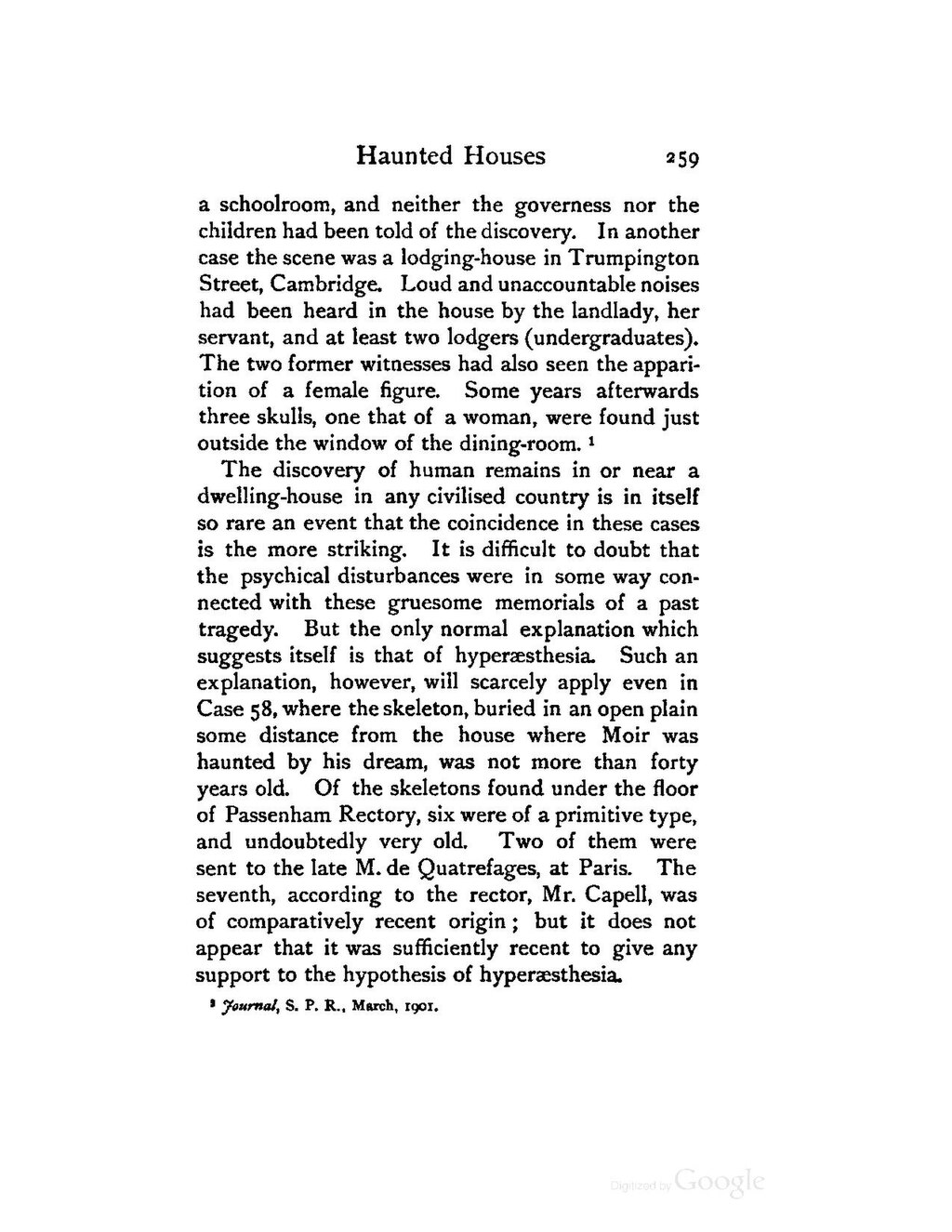a schoolroom, and neither the governess nor the children had been told of the discovery. In another case the scene was a lodging-house in Trumpington Street, Cambridge. Loud and unaccountable noises had been heard in the house by the landlady, her servant, and at least two lodgers (undergraduates). The two former witnesses had also seen the apparition of a female figure. Some years afterwards three skulls, one that of a woman, were found just outside the window of the dining-room.[1]
The discovery of human remains in or near a dwelling-house in any civilised country is in itself so rare an event that the coincidence in these cases is the more striking. It is difficult to doubt that the psychical disturbances were in some way connected with these gruesome memorials of a past tragedy. But the only normal explanation which suggests itself is that of hyperaesthesia. Such an explanation, however, will scarcely apply even in Case 58, where the skeleton, buried in an open plain some distance from the house where Moir was haunted by his dream, was not more than forty years old. Of the skeletons found under the floor of Passenham Rectory, six were of a primitive type, and undoubtedly very old. Two of them were sent to the late M. de Quatrefages, at Paris. The seventh, according to the rector, Mr. Capell, was of comparatively recent origin; but it does not appear that it was sufficiently recent to give any support to the hypothesis of hyperæsthesia.
- ↑ Journal, S. P. R., March, 1901.
